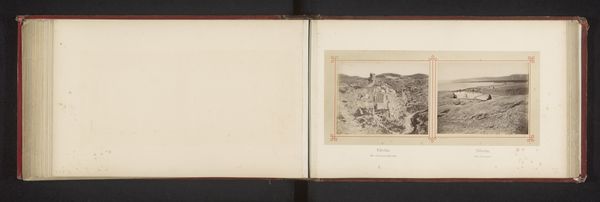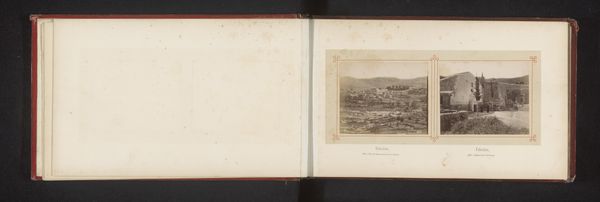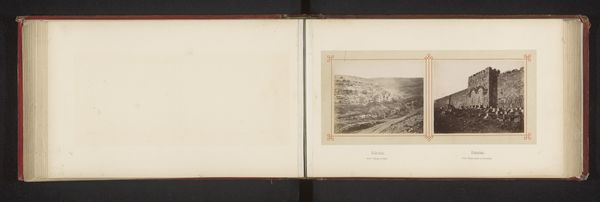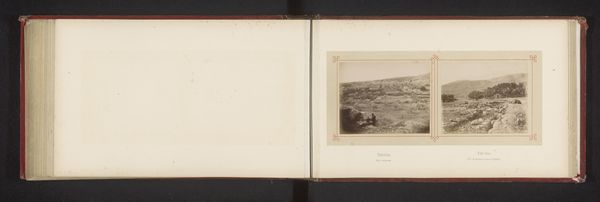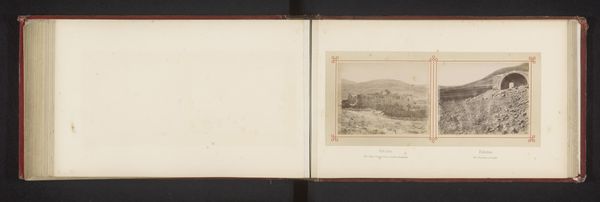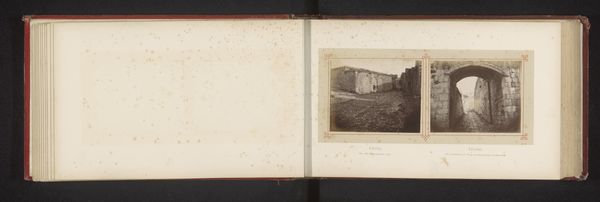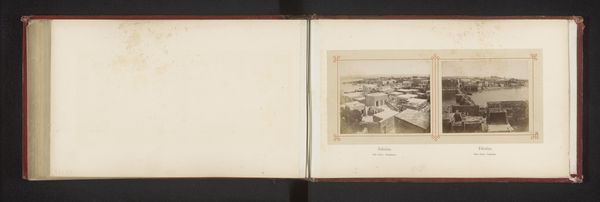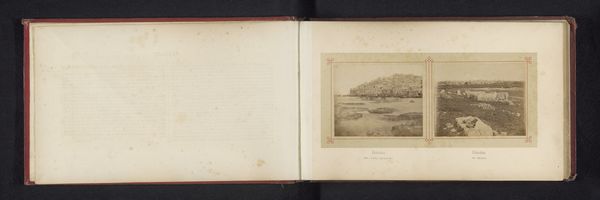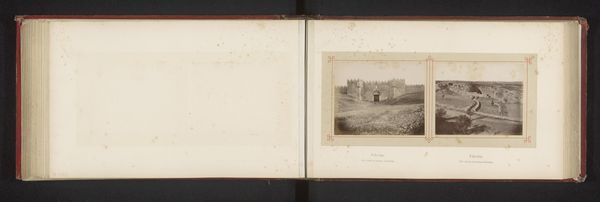
#
aged paper
#
toned paper
#
homemade paper
#
ink paper printed
#
fading type
#
watercolour bleed
#
watercolour illustration
#
golden font
#
watercolor
#
historical font
Dimensions: height 77 mm, width 94 mm
Copyright: Rijks Museum: Open Domain
Editor: Here we have Félix Bonfils's "Gezicht op de koepels van de Heilig Grafkerk," which translates to "View of the domes of the Church of the Holy Sepulchre," dating to before 1878. It seems to be part of an album of photographs. I'm struck by the way the images are presented almost like pressed flowers in a Victorian scrapbook. What do you see in this piece beyond its visual presentation? Curator: Beyond the immediate aesthetic appeal, I see a powerful commentary on representation and power. Consider the historical context: Bonfils, a Western photographer, documenting a sacred site in Jerusalem. How does this act of documentation intersect with colonialism and the Western gaze? Editor: That’s a fascinating point. I hadn't really considered it from a postcolonial perspective. So, the photographs are not just neutral documentation. Curator: Precisely. They participate in a larger system of representation where the West "captures" and interprets the East for its own consumption. The album format, as you noted, adds another layer. These images become personal trophies, souvenirs of a journey, reinforcing a power dynamic. Who had access to these images, and what narratives did they perpetuate? Editor: It’s interesting to think about who the intended audience was and how that influenced Bonfils's choices in composition and subject matter. Are there any specific details that suggest a particular narrative or point of view? Curator: Look at the way the Church is presented – a monumental structure, seemingly untouched by the everyday life around it. It romanticizes a timeless image and suggests an enduring Western presence and dominance in the region. But the absence of other perspectives obscures the lived realities of the people within those spaces. Editor: I never considered that before! It’s a reminder that every photograph, no matter how seemingly objective, is shaped by the photographer’s background and biases, especially when representing cultures and perspectives beyond their own lived experience. Curator: Indeed. This image invites us to critically examine not just what is shown, but what is intentionally and unintentionally omitted, as well as how colonial power is expressed through images. Editor: I'll definitely look at other works with this critical lens going forward. Thanks so much.
Comments
No comments
Be the first to comment and join the conversation on the ultimate creative platform.

